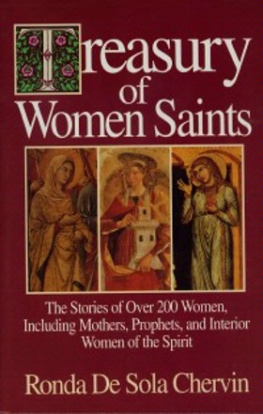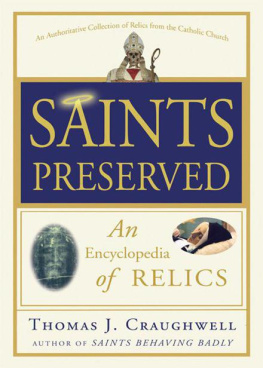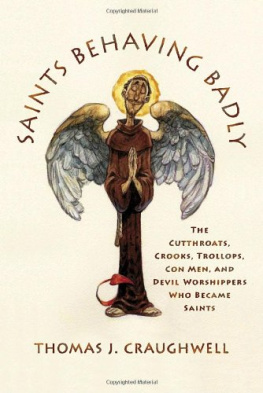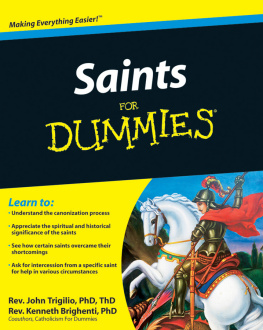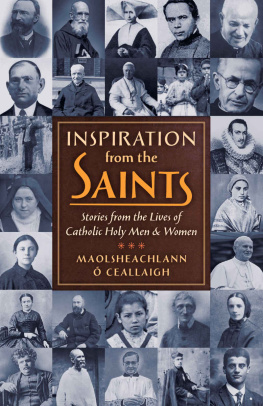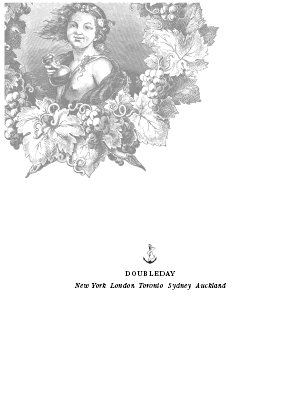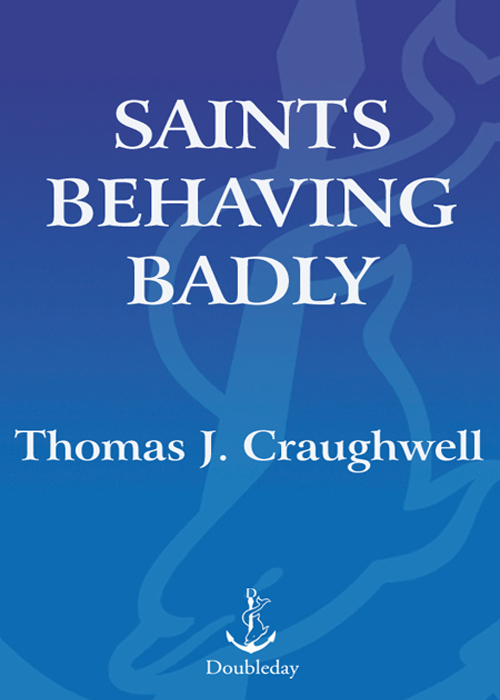
Contents
For Alex and
Steven Mezzomo
who never behave badly
Introduction
W here is Mary Magdalene?
I can see the reviewers complaints now. How can you write a book about saints who started out as notorious sinners and omit the most famous converted sinner of all?
The short answer is Mary Magdalene was not a notorious sinner.
Granted, centuries of paintings and sculptures have shown her draped in a loose red robe, her long, luxurious hair flowing free, her shoulders and sometimes even her breasts exposedthe very image of female sensuality. But art is not always evidence, especially so in this case. The inescapable fact remains that nowhere in the four gospels does it ever say that Mary Magdalene was a prostitute or in any other way sexually promiscuous. True, the gospels of Mark, Matthew, and Luke say that Christ cast seven devils out of Mary Magdalene, but that is no reason to assume that the demons made her a sure thing. Christ cast devils out of plenty of men, too, but no one suggests that they were licentious. Luke does mention an anonymous woman who was a sinner, but he never suggests this woman was Mary Magdalene.
Where, then, did we get this notion of Mary Magdalene as a harlot? There is evidence that in the first century of the Christian era Marys hometown, Magdala, or el Mejdel, on the northwest shore of the Sea of Galilee, had an infamous reputation. About the year AD 75 the Roman authorities actually leveled the place and dispersed its depraved inhabitants. Perhaps the first Christians felt that anyone who came from el Mejdel had to be bad.
It is more likely, however, that Mary Magdalene the Prostitute is a composite of several New Testament women. There are lots of Marys in the gospels: Mary the mother of Jesus, Mary Magdalene, and Mary the sister of Martha and Lazarus being the most prominent. In an attempt to simplify things, at the end of the sixth century Pope St. Gregory the Great (c. 540604) asserted that Lukes anonymous sinner, Mary the sister of Martha and Lazarus, and Mary Magdalene were all the same woman. The el Mejdel theory is plausible, but St. Gregory is the most probable source for our misconceptions about the Magdalene.
In passing Id like to mention that the current craze for rehabilitating/rediscovering/reimagining Mary Magdalene has done nothing to clarify the situation. About a year ago a group of Mary Magdalene aficionados managed to convince the pastor of a Catholic parish in northern New Jersey to let them use his church for a freewheeling service they wanted to conduct in honor of their favorite saint. The pastor gave them permission to use the building, but barred his parish clergy from presiding at, or even attending, the function. It was just as well. A local newspaper that covered the event reported that during the service a newly composed Litany of Mary Magdalene was read out to the attendees, listing Marys supposed attributes. My personal favorite was the invocation O, most inclusive one!
Of course, suburban neo-Gnostics are not the only ones guilty of distorting the saints; perfectly orthodox Christians have been doing so for centuries. Christian art, whether in marble or in plaster, on canvas or on a laminated holy card, shows us saints who are blissful and pure, who appear incapable of ever uttering a cross word let alone spending years and years hip deep in mortal sin. In other words, most depictions of saints make sanctity look easy.
At least since the nineteenth century many authors have gone out of their way to sanitize the lives of the saints, often glossing over the more embarrassing cases with the phrase he/she was once a great sinner. I dont doubt the hagiographers good intentions, but I cant help thinking it is misguided to edit out the wayward years of a saints life. In the early centuries of the Church and all through the Middle Ages writers of saints lives were perfectly candid about saints whose early lives were far from saintly. It is from these ancient sources that we learn of the bloodbath St. Olga unleashed on her husbands assassins; of St. Mary of Egypt trolling the streets of Alexandria for new sexual conquests; of the obscenely rich St. Thomas Becket looking down at a poor man almost freezing to death in the street and refusing to give him his cloak.
The point of reading these stories is not to experience some tabloid thrill, but to understand how grace works in the world. Every day, all day long, God pours out his grace upon us, urging us, coaxing us, to turn away from everything that is base and cheap and unsatisfying, and turn toward the only thing that is eternal, perfect, and truethat is, himself.
What is a saint? A saint is a person who tries to imitate Jesus Christ, who strives to practice the virtues to a heroic degree. Lots of people are good, and some people around us show glimmers of saintliness from time to time, but a man or a woman whose entire life, all day, every day, is devoted to self-sacrificing good works and intense periods of conversation with God (commonly known as prayer), these individuals are rare indeed. Most of us will never know a saint.
Saints need not be infallibly perfect all the time. As I mentioned earlier, for the 2000 years of the Churchs history, hagiographers gloried in the lives of great sinners who became great saints. Their message is reassuring: if these people can be saved, then so can you!
But just as the old storytellers did not whitewash the misdeeds of the saints, neither did they minimize the effort involved in conversion. A conversion experience is not magic; it is only the first step in a lifetime of striving to avoid the old sins, grow in virtue, and conform ones unruly, rebellious will to the will of God. All that is hard to do, as these stories will show.
St. Matthew, Extortionist

[1st century] FEAST DAY: September 21
N o one likes taxes. But antitax animosity was especially intense in ancient Israel during the first century of the Christian era. In the gospels tax collectors (also known as publicans) are frequently mentioned in the same breath as harlots and sinners.
If tax collectors had a lousy reputation two thousand years ago, they deserved it. Under the Romans, the governor of each province was responsible for collecting the tax on land. Other taxeson individuals, on personal property, on imports and exportswere subcontracted to private individuals who paid the Romans a fee in advance for the right to collect whatever Rome had levied on the conquered nations of its empire. These freelance tax collectors profited from this transaction by overcharging and extorting as much as they could get out of the taxpayers. The Romans didnt careas long as they got the full balance of what was due. The Jews, on the other hand, cared quite a lot. In their eyes Jewish tax collectors were shameless crooks who committed the twofold crime of collaborating with heathens and preying upon their own people. Little wonder that the Jews of Christs day regarded tax collectors with loathing.
Matthew, also called Levi in the gospels of St. Mark and St. Luke, was a tax collector at Capernaum, a Roman garrison town. He was sitting at his table in the customs house, shaking down his neighbors, when Jesus Christ walked by. Our Lord had just healed a paralyzed man; now he was about to reconcile a sinner. Follow me, Christ said. To the surprise of the Roman guards, the clerks, and the taxpayers, Matthew got up, left the money where it lay on the table, turned his back on a life of government-sanctioned larceny, and joined the handful of men we know as the twelve apostles.
Next page

![Dzhon Makdonald - The Sinner of the Saints [story]](/uploads/posts/book/924785/thumbs/dzhon-makdonald-the-sinner-of-the-saints-story.jpg)
